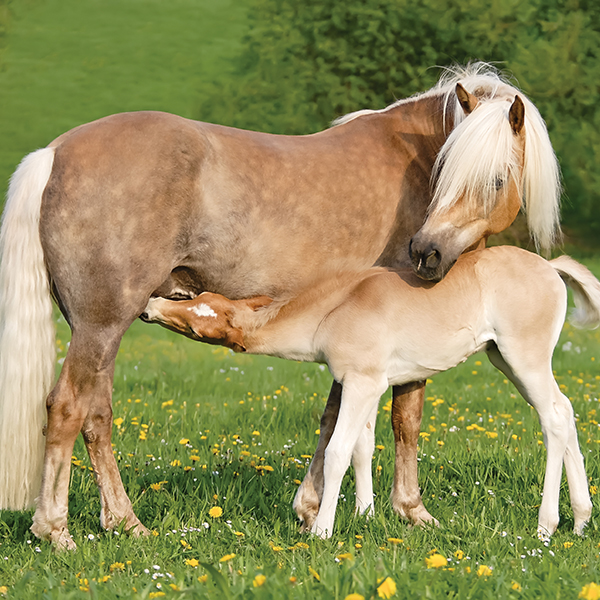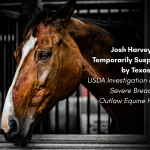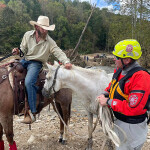You spent countless hours searching for the perfect stallion, carefully planning for your mare’s nutritional and medical needs during pregnancy all while getting the barn ready for the foal. Once the long anticipated day arrives your mare will undertake the most energy demanding stage of her life.
Most mares do well on their normal diet until the last third of gestation when they need a 30% increase in caloric intake as the rapidly growing foal gains one pound body weight daily and her body prepares for lactation. When her milk production is at the highest in the first three months, she may need 60-80% increase in calories and 50-200% increase in water intake (NRC, Nutrient Requirements of Horses, 2007). She also needs increased protein, calcium and phosphorous in her diet. How to supply those increased levels of nutrients takes careful planning, especially if you have a mare with a history of Insulin Resistance or Equine Metabolic Syndrome.
It is well known that horses are sensitive to high levels of sugar in their diet. So the best way to add calories to a mare’s diet is by increasing the fat content. Since fat isn’t very palatable to many horses adding it to other feeds, like corn and oats, improves the taste. Some companies even add flavor enhancers such as anise (licorice). Many national and local feed mills have higher fat feeds designed specifically for pregnant and lactating mares. There are also commercially available high fat concentrates that can be added to your mare’s regular diet.
These specifically formulated diets are ideal as they balance not only calories, but also protein, fat, vitamins, and minerals. Proper levels of vitamins, fatty acids, minerals and micro-minerals are key to the nursing foal who gets all its nutrition from the mare’s milk. They also help keep your mare in good condition as she exerts tremendous energy producing milk. It’s important to follow label directions and never add grains to a mixed feed without first consulting an Equine Nutritionist or your veterinarian. For instance, adding oats to a mixed feed increases the level of phosphorus in the diet. If phosphorous is higher than calcium in the diet, the body will pull calcium out of the bone to process the excess phosphorous. You can do a Google search for Big Head Disease to see images of horses fed excess phosphorus. If you follow the label directions your mare and foal will get all the nutrients needed in the correct ratios.
It’s important to monitor your mare’s body condition during lactation. If she is not fed adequate calories, protein, and minerals, she will pull these nutrients from her own body to maintain milk production. A body condition score (BCS) between 5 and 7 is generally considered ideal for a mare in milk. You may need to adjust the amount of feed she gets if her BCS starts to drop.
“If you need to add calories for a broodmare, first make sure she is getting the recommended amount of feed on the bag and that she is eating as much good quality forage as she wants to eat. If those are covered, you can then add a balanced fat supplement, like Amplify. If cost is an issue, you can also add an oil instead, such as corn oil, to add calories,” notes Mary Beth Gordon, PhD, Equine Nutritionist, Purina Animal Nutrition.
Other sources of fat include ground flax seed (often with added vitamins and minerals) and commercially produced oil products. Weekly assessment of your mare’s BCS will help you adapt her diet as she goes through changes in dietary needs from birth through weaning her foal.
For mares with metabolic challenges it may be best to consult your veterinarian or Equine Nutritionist for ways to safely increase her caloric intake. Late gestation mares typically don’t eat as much forage and often rely on some form of concentrate for added calories; often this comes through grain products. Feeding a higher quality hay and adding fat for calories can keep your mare in good condition as she foals and begins lactating.
As with all your horses, offering clean, fresh water along with free choice salt and high quality hay and/or pasture will keep your mare in good condition while she lactates. It’s good to monitor your mare (and foal) for dehydration during this time and call your vet if you have any concerns.
Mares have foaled without human intervention for thousands of years and continue to do so today in the wild. With selective breeding and housing in confined ares, we have changed the game. But with careful planning and advice from your veterinarian and Equine Nutritionist, your mare can successfully feed her foal and maintain her own condition. Congratulations on your new addition!









